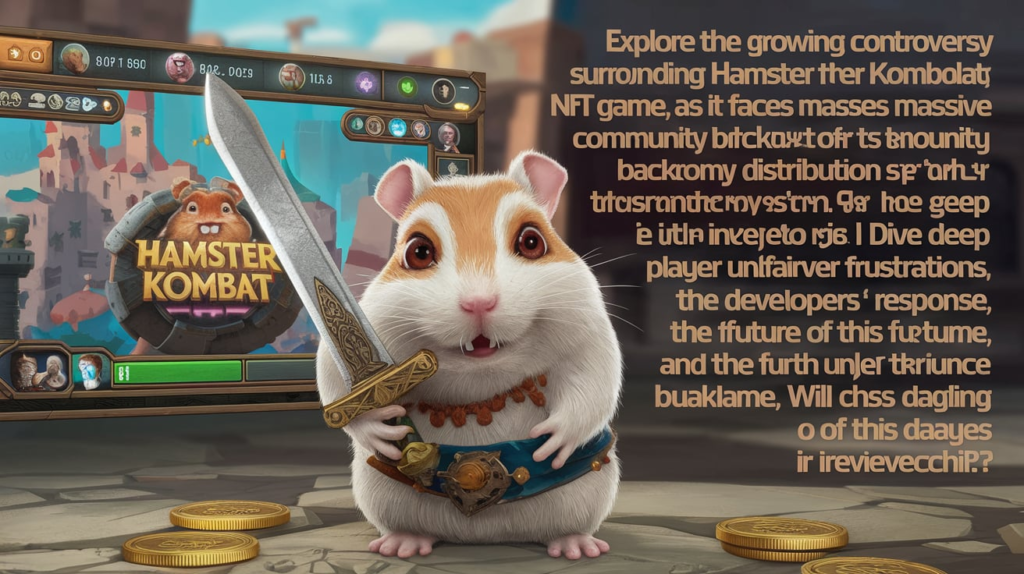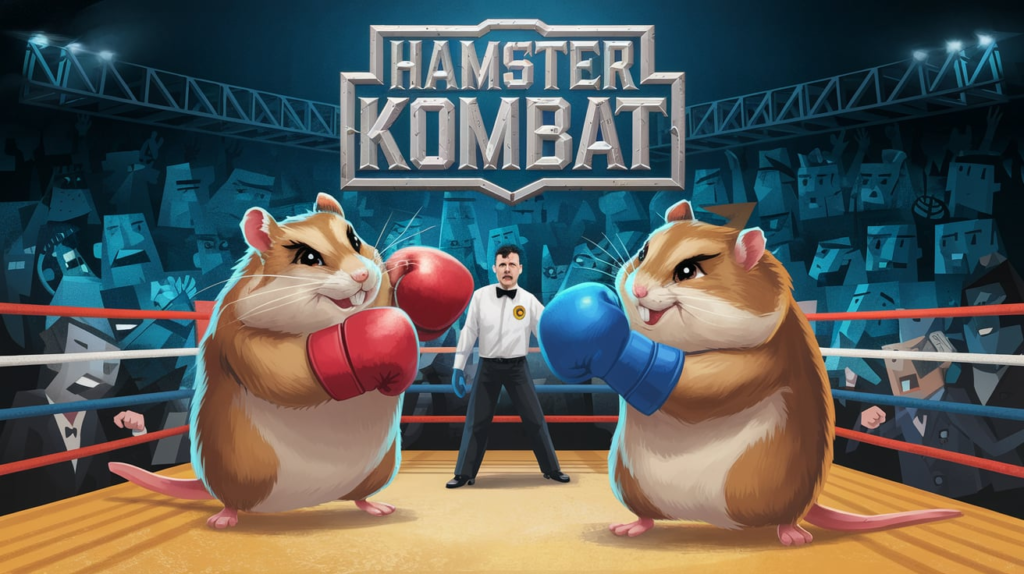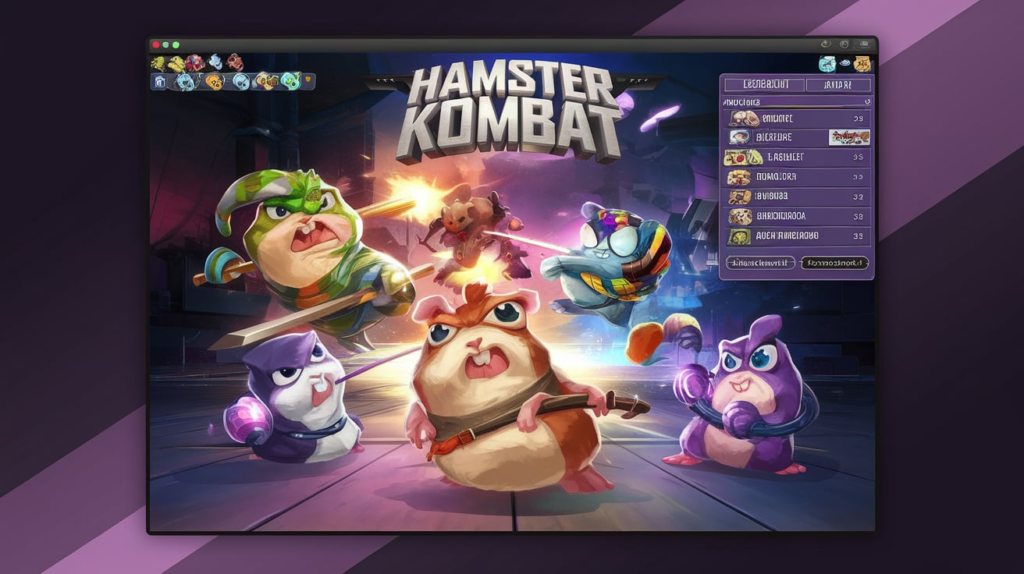
“Hamster Kombat NFT Game Faces Massive Community Backlash: Is the Token Distribution System Unfair?”
In recent months, the NFT gaming industry has exploded with innovative games, and Hamster Kombat has been riding high on this wave. However, not all is well within the game’s vibrant community. Hamster Kombat, known for its quirky characters and immersive play-to-earn (P2E) model, has come under fire from its players. The controversy? Unfair token distribution that many believe heavily favors a select few, leaving the majority of players out in the cold.
In this article, we’ll break down the unfolding drama, exploring why the community feels betrayed, what went wrong with Hamster Kombat’s tokenomics, and how the game’s developers are responding to the backlash. By the end, you’ll understand the full picture, backed by real-world insights and examples, and we’ll conclude with an FAQ to address the most pressing questions. Let’s dive in!
1. Hamster Kombat: A Brief Overview
Hamster Kombat launched with great fanfare as part of the broader trend of NFT-based games. Its unique selling point was its adorable yet battle-hardened hamsters, which players could collect, trade, and battle against each other. The game’s core mechanic revolved around NFTs, with each hamster being a unique, tradeable asset. Players could earn rewards by winning battles, completing missions, or simply owning particularly rare or powerful hamsters.
The game also introduced its native token, $HMSTR, which players could earn in-game and use to unlock special features or trade on the open market. At first, Hamster Kombat appeared to offer a balanced economy where effort and skill would be rewarded. But as time went on, cracks in the system began to emerge, leading to widespread frustration and claims of an uneven token distribution system.
2. The Source of the Backlash: Unfair Token Distribution
The heart of the controversy lies in the way Hamster Kombat distributed its $HMSTR tokens. In theory, the game’s tokenomics were designed to reward active players and early adopters. However, in practice, many feel the system is rigged to benefit a small elite while leaving casual or newer players at a disadvantage.
The Whales and the Over-concentration of $HMSTR
One of the primary grievances from the community is that a handful of “whales”—large investors who bought a significant portion of tokens early on—now control a disproportionate amount of the total $HMSTR supply. This concentration of tokens allows them to manipulate in-game economies, leaving average players with little room to benefit from playing the game.
These whales not only hold the most valuable NFTs, but they also have the resources to influence the token’s market price. As a result, many players find that despite their time and effort invested in the game, their rewards pale in comparison to the returns enjoyed by these early investors.
Token Airdrops: A Missed Opportunity?
Another sore point has been the airdrops of $HMSTR tokens. Originally, these airdrops were intended to help democratize the game by rewarding active players and helping newer users get a foothold in the game’s economy. However, many players feel that the airdrop system has been mismanaged. Reports suggest that the largest airdrop allocations went to wallets already brimming with tokens, further consolidating wealth among a select few.
This perceived imbalance has sparked accusations that the game’s developers are favoring early backers and large investors at the expense of regular players. On social media platforms like Twitter and Discord, many users have voiced their dissatisfaction, with some even threatening to leave the game altogether if the situation doesn’t improve.

3. The Fallout: How the Community Responded
The backlash to the token distribution system has been swift and intense. The Hamster Kombat community, once united by their shared love for the game, now finds itself fractured. Below are some key reactions:
1. Protests on Social Media
Players have taken to social media en masse to voice their concerns, with many using hashtags like #HamsterKombatScam and #FixTokenomics to call attention to what they see as unfair practices. These movements have gained traction, with thousands of players joining in to share their experiences and frustrations.
2. Decrease in Player Engagement
The controversy has also taken a toll on the game’s daily active users (DAUs). Data shows a noticeable drop in player engagement since the tokenomics issue came to light. Players who feel that their efforts are not being fairly rewarded are becoming less motivated to play, leading to a slow but steady decline in the game’s popularity.
3. NFT Prices in Freefall
Another side effect of the controversy has been the plummeting value of the game’s NFTs. Many players, disillusioned by the unfair token distribution and whale-dominated economy, have begun selling off their assets. This mass sell-off has led to a sharp decline in the value of even the rarest hamsters, further disincentivizing play and causing many to exit the game entirely.
4. Developer Response: Damage Control or Real Reform?
The developers behind Hamster Kombat have not remained silent in the face of the backlash. In response to the criticism, they have released several statements, pledging to address the community’s concerns. But are these promises enough to win back player trust?
1. Tokenomics Revisions
The developers have promised to review the tokenomics of the game and implement changes to make the distribution of $HMSTR more equitable. This includes proposals to cap the amount of tokens any one player can hold and a reworking of the airdrop system to ensure that future distributions favor active and dedicated players rather than those with large wallets.
2. Community-Driven Decision Making
In an attempt to rebuild trust, the team has also proposed giving players more of a voice in the game’s development. They have promised to create a governance model where players can vote on key decisions, including tokenomics adjustments and the direction of future updates.
3. New Player Incentives
To combat the decreasing player engagement, the developers are rolling out new incentives for players. These include bonus rewards for new players, special missions designed to help beginners earn $HMSTR tokens more quickly, and increased rewards for long-term, loyal players.
While these changes represent a step in the right direction, many players remain skeptical. After all, the tokenomics issues didn’t arise overnight, and fixing them will likely require more than a few quick fixes.
5. What Does the Future Hold for Hamster Kombat?
The future of Hamster Kombat remains uncertain. The game’s developers face a daunting task: they must not only address the community’s concerns but also rebuild the trust that has been lost. While their initial response has been promising, it will take sustained effort to convince players that the game’s economy can once again be fair and balanced.
At the same time, the broader NFT gaming space is evolving quickly. As more games enter the market, players have more choices than ever before. If Hamster Kombat fails to resolve its issues, it risks being left behind as players move on to more equitable and engaging alternatives.

FAQ: Hamster Kombat Token Distribution Controversy
Q1: What is the main issue with Hamster Kombat’s token distribution?
The main issue is that a small group of players (often referred to as “whales”) hold a disproportionately large amount of $HMSTR tokens, allowing them to dominate the in-game economy and leaving average players with less opportunity to earn meaningful rewards.
Q2: How did whales get such a large portion of the $HMSTR tokens?
Many of these players were early investors in the game and purchased large amounts of tokens during the initial sale. Additionally, they received a significant share of the token airdrops, which further consolidated their control over the game’s economy.
Q3: What changes are the developers making to address the issue?
The developers have promised to revise the game’s tokenomics, cap the amount of $HMSTR any one player can hold, and make future airdrops more accessible to active players. They’ve also proposed giving the community more say in the game’s decision-making process.
Q4: Can Hamster Kombat recover from this controversy?
It’s possible, but it will require sustained effort from the developers to fix the tokenomics and regain the community’s trust. If they fail to do so, they risk losing players to other NFT games with more balanced economies.
Q5: How can new players earn tokens fairly in Hamster Kombat?
The developers are introducing new incentives for beginners, including bonus rewards, special missions, and increased payouts for loyal players. These changes are aimed at leveling the playing field and helping new players get started more easily.
Conclusion
The Hamster Kombat token distribution controversy has highlighted the challenges of maintaining a fair and balanced economy in a rapidly evolving NFT gaming space. While the developers have taken steps to address the community’s concerns, it remains to be seen whether these changes will be enough to win back player trust. For now, players are left to decide whether to stick with the game and hope for improvements or move on to new opportunities in the NFT gaming world.